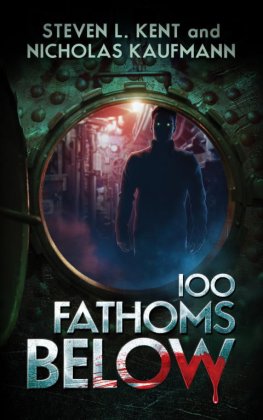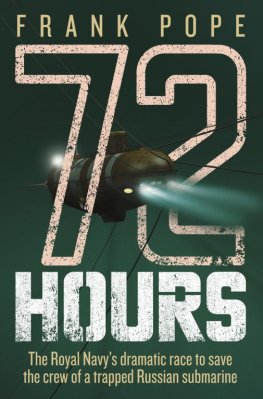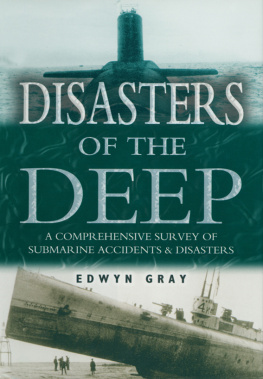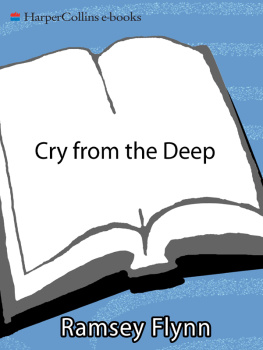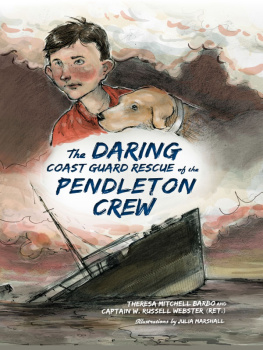T he rescue divers could hear the crew tapping out a message in Morse code: Is there any hope? After being accidentally rammed by the Coast Guard destroyer USS Paulding on December 17, 1927, the USS S-4 submarine sank to the ocean floor off Cape Cod with all forty crew aboard. Only six sailors in the forward torpedo room survived the initial accident, trapped in the compartment with the oxygen running out.
Author and naval historian Joseph A. Williams has delved into never-revealed archival sources to tell the compelling narrative of the S-4 disaster, the first attempt to rescue survivors stranded aboard a modern submarine. As navy deep sea divers struggled to save the imprisoned men, a winter storm raged at the surface, creating some of the worst diving conditions in American history. Circumstances were so terrible that one diver, Fred Michels, became trapped in the wreckage while trying to attach an air hose to the sunken subthe rescuer now needed to be rescued. It was only through the bravery of a second diver, Thomas Eadie, that Michels was saved.
As detailed in Seventeen Fathoms Deep, lessons learned during this great tragedy moved the US Navy to improve submarine rescue technology, which resulted in later successful rescues of other downed submariners.

Copyright 2015 by Joseph A. Williams
All rights reserved
Published by Chicago Review Press Incorporated
814 North Franklin Street
Chicago, Illinois 60610
ISBN 978-1-61373-138-3
Library of Congress Cataloging-in-Publication Data
Williams, Joseph A., 1973
Seventeen fathoms deep : the saga of the Submarine S-4 disaster / Joseph A. Williams.
pages cm
Includes bibliographical references and index.
ISBN 978-1-61373-138-3
1. Submarine disastersUnited StatesHistory20th century. 2. S-4 (Submarine) 3. United States. NavySearch and rescue operations. 4. Cape Cod (Mass.)History, Naval20th century. I. Title. II. Title: Saga of the Submarine S-4 disaster.
VK1265.W55 2015
359.93832dc23
2015018522
Interior design: PerfecType, Nashville, TN
Printed in the United States of America
5 4 3 2 1
In memory of my father,
Gunners Mate Third Class Paul J. Williams (19471998)
CONTENTS
Index
PREFACE
THE YEAR 1927 WAS ICONIC. It started with a January 7 telephone call across the Atlanticthe first in history. In February, the Federal Radio Commission began to regulate radio, which was then in its golden age. On March 11, Gloria Swansons silent film The Love of Sunya was the first motion picture shown at New Yorks legendary movie house the Roxy Theatre. But the age of the silent movie came to an end later that year with the release of The Jazz Singer starring Al Jolson. The Model A Ford replaced the venerable Model T, and in May Charles Lindbergh made his famous nonstop transatlantic flight. That year saw the apogee of Babe Ruths awesome prowess at the batters box as he delivered a sixty-home-run season. New heights were reached on Wall Street, aided by a steady conservative government headed by Calvin Coolidge.
But the year also had a dark side. It was in the era of Prohibition, when gangster Al Capone reached the apex of his powers in Chicago, and a twenty-four-year-old Elliot Ness joined the US Treasury Department to enforce the controversial dry law of the land. In May, a disgruntled school board treasurer from Bath Township, Michigan, murdered his wife, bombed his own homestead followed by the school, then killed himself and several others by detonating his own car in front of the school. Forty-five people were killed, including many children. The Mississippi River suffered massive flooding from April to August, inundating more than twenty-seven thousand square miles and affecting the lives of hundreds of thousands of people. Flooding, too, occurred that November in Coolidges home state of Vermont, killing eighty-four people and leaving more than ten thousand people homeless.
But on the whole, 1927 was a year of optimism. World War I had long passed, and in some quarters it was thought possible to abolish war altogether. It was not only the quintessential year of the Roaring Twenties, it was ebullient.
Then, at the end of the year, there was the submarine S-4 disaster.
As a librarian, writer, and researcher, I know firsthand the perils of getting lost in other peoples lives. Forgotten letters, faded photographs, lost diaries, etc.these are the building blocks of history. To explore them is a serendipitous passage through time and imagination. Finding lost manuscripts is even more delightful, because it is a secret that only you know and cannot wait to share.
On one of these trips through time, I was exploring the archives at the Stephen B. Luce Library, State University of New York Maritime College. The college specializes in educating students for careers in the maritime industry and related fields. The library, located within a nineteenth-century fort, is archaic and modern all at oncewhere history meets digital alacrity. The library has an extensive but not well known collection of manuscripts from its graduates going back to the nineteenth century. In fact, it holds a chronicle of American maritime history that is largely untapped.
I was researching the collection in preparation for my first book. One old steel-gray archival box after another was opened, dust carefully wiped away, and new discoveries made. Eventually I came upon the papers of John S. Baylis, an alumnus of the school who had died in 1971. As I pored through scrapbooks, antique tomes, and worn-out ephemera, I found a set of three dusty boxes labeled T HE S-4 I NCIDENT .
I took the first of the boxes from the shelf and laid it on a credenza. I carefully cracked open the lid. It felt stiffas if it had not been opened for decades. I peered inside. I was struck by how it was jammed with materialsand this was but one box of three!
The first item I removed was a yellow envelope. The glue on the flaps had long dried, and the envelope probably needed to be replaced. But my attention was drawn to the solid object that it was storing. Reaching in with a white-gloved hand, I removed a circular glass object, roughly the size of my fist. I held it up to the light. The pale fluorescent light gleamed opaquely through it. Then, looking at the envelope again, I saw scrawled writing in faded pencil: Periscope Glass of Submarine S-4.
At that moment, I felt like Indiana Jones without the hat or bullwhip.
After I finished my first book, I was able to return to those boxes and explore them at great length. In them were the building blocks for a storya dark tale, but one with incredible heroism, moments of poignant humor, and ultimate redemption. Looking deeper into the story of the submarine S-4, I found that it had only been written about in limited ways. But before me was a virtually complete record: hundreds of pages of transcripts of navy hearings, photographs of divers, telegrams, and lettersall the essentials to make a story that ultimately is a test of human nature. It was an archival secret that I had found and wanted to share.
I then conducted a multiyear quest to learn the meaning of the S-4. I ranged far and wide, searching other archives, talking to descendants, and contacting experts in salvage and submarines. The result is this book, which explores the themes of the S-4 incident: ingenuity, technology, and cleverness can always be tested by powers beyond human control. The question really then becomes whether or not humanity learns from the testing.
Next page

